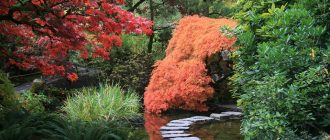Learn about the various diseases that the Japanese maple tree is prone to develop and how you can safeguard against them.
Although the versatile range of Japanese maple trees are known to be quite resilient it still has its vulnerabilities. The use of Japanese maples is extensive. From being one of the best ornamental trees for garden and park decoration the maple is also used for its wood to make furniture and its sap to make syrup.
This valuable tree needs to be taken good care of if you want to reap any of its benefits. Amongst the very first things that can pose problems for the health of the maple tree is the soil. Good soil is the single most important thing to ensure when it comes to growing maple trees.
The soil type is what determines the nutrition level that the tree will be receiving along with determining how effectively it will be able to benefit from them. Hence the immune system of your maple tree will be tested as to whether it is strong enough to fight off diseases like verticillium wilt or is it fit enough to grow in an urban environment. If your home garden is studded with Japanese maple trees then the best thing for you to do is to add mcorrhizal fungi to the soil.
There are some pests who have an equally deep love for the Japanese maple as do most gardening enthusiasts. The Asian Longhorned Beetle is one of the deadliest enemies of the maple tree. Although this little insect if of Asian origins it has migrated along with the trees to all parts of the world. Hence this pest is something to watch out for.
Amongst the diseases that the Japanese maple is prone to develop is Anthracnose. This is actually a category of closely related fungi based diseases that can have a negative effect on the maple tree. The white oak, sycamore, elm, dogwood and the Japanese maple are most vulnerable to this disease.
Another disease related specifically to the Japanese maple tree is the maple wilt. Also known as the verticillium wilt this is a potentially dangerous and rather common disease. It is a very destructive soil borne fungus that is a maple tree killer. Silver, sugar, sycamore, red and the traditional Japanese maples are hyper sensitive to this disease.
A fungus known as ceratocystis coerulescens is responsible for giving birth to a disease known as the sapstreak disease. This is a relatively newly discovered disease that is causing minor problems to Japanese maples but it is believed that the disease has the potential to cause some serious damage if left unattended. Recovery beyond a certain stage is not possible with the sapstreak disease as it totally discolours the wood.
Tar spots are a dramatic and inconsequential disease that causes tar like spots on the otherwise beautiful leaves of the Japanese maple. The fungus thrives in the fall season and can develop under moist conditions during the spring season.




